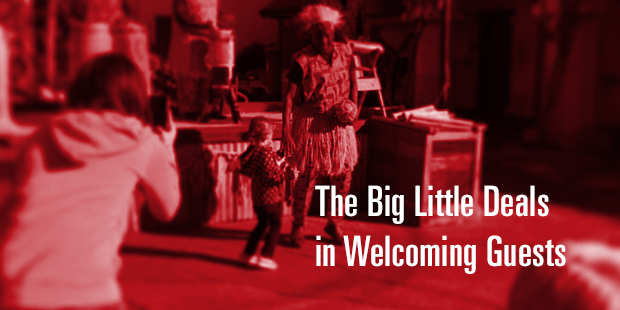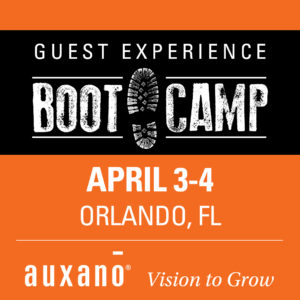
The Big Little Deals in Welcoming Guests
To design most effectively for our guests, we learned that we had to observe them up close, waiting in lines with them, going on rides with them, eating with them. Going out into the park taught us how guests were being treated and how they responded to sensory information, what worked and what didn’t what their needs were and how we could meet them in entertaining ways. We paid attention to guests’ patterns of movement and the ways in which they expressed their emotions. – John Hench, Disney Legend, Imagineering Genius for 60+ years
Designing the Guest’s experience is what Walt Disney’s Imagineers came to call “the art of the show,” a term that applies to what the Imagineers did at every level, from the broadest conceptual outlines to the smallest details, encompassing visual storytelling, characters, and the use of color.
The Imagineers design intention is always to give satisfaction to the guest.
Walt Disney realized that a visit to an amusement park could be like a theatrical experience – in a word, a show. Walt saw that the Guests’ sense of progressing through a narrative, of living out a story told visually, could link together the great variety of attractions he envisioned for his new kind of park. While traveling through their stories, Guests would encounter, and even interact with, their favorite Disney characters, and who would be transformed, as if by magic, from their two-dimensional film existence into this special three-dimensional story world.
As designers, the Imagineers create spaces – guided experiences that take place in carefully structured environments, allowing the Guests to see, hear, smell, touch, and taste in new ways. In effect, Imagineers are welcoming Guests by transforming a space into a story place.
Ultimately, the Imagineers gave Guests a place to play, something Walt believed that adults needed as much as children. The design of the Imagineers gives power to the Guests’ imagination, to transcend their everyday routine. Walt Disney insisted that Guests should “feel better because of” their experiences in Disney theme parks, thus establishing the art of the show.
For the Imagineers, that meant considering everything within and relating to the parks as design elements. To build effective story environments and assure Guest comfort, the designers realized that they always had to assume the Guests’ position and point of view, and just as Walt did, to take the Guests’ interests to heart and defend them when others didn’t think it mattered.
It is up to the designers to provide Guests with the appropriate sensory information that makes each story environment convincing. This means that design considerations go beyond the attractions themselves to the service and operations staff, transportation, restaurants, shops, rest rooms – even the trash cans.
Initially, the Imagineers used the knowledge gained from their experience in films, but they soon found that theirGuests themselves would teach them what they most needed to know about theme park design and operation.
When designers see Guests in their natural states of behavior, they gain a better understanding of the space and time Guests need in a story environment.
Application for ChurchWorld
Really? If you are involved in Guest Services at your church in any capacity, and can’t see the immediate and powerful application of the concepts above, may I kindly suggest you are serving in the wrong ministry area?
“Be Our Guest” has been the invitation to Disney visitors long before the song from Beauty and the Beast became a box office hit.
It underscores an important element in the Disney vocabulary, that customers are not referred to as such, but rather as Guests. In the Disney nomenclature, the word “Guest” is capitalized and treated as a formal noun.
What’s the difference between treating someone like a visitor, and treating someone like a Guest?
At Disney theme parks around the world, they expect Guests – and plan to exceed their Guests’ expectations every time. What about you?
Are you expecting Guests?
inspired by Designing Disney: Imagineering and the Art of the Show, by John Hench

Want to learn how to create an EXCEPTIONAL Guest Experience at your church? Check out Auxano’s Guest Experience Boot Camp, coming to Orlando, FL on April 3-4.

Tags: Bob Adams, Disney, Imagineers, Story Place, Welcoming Guests














